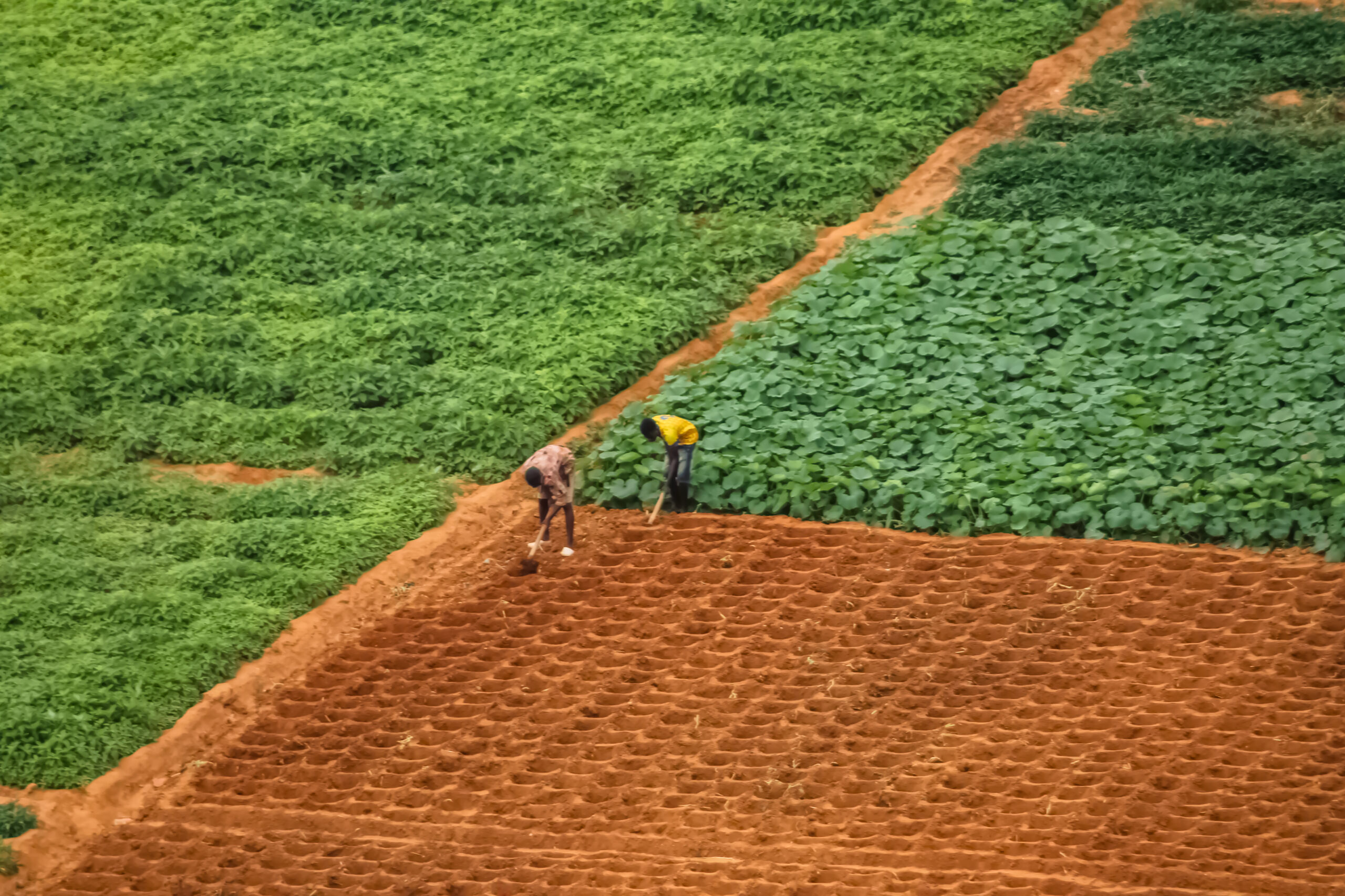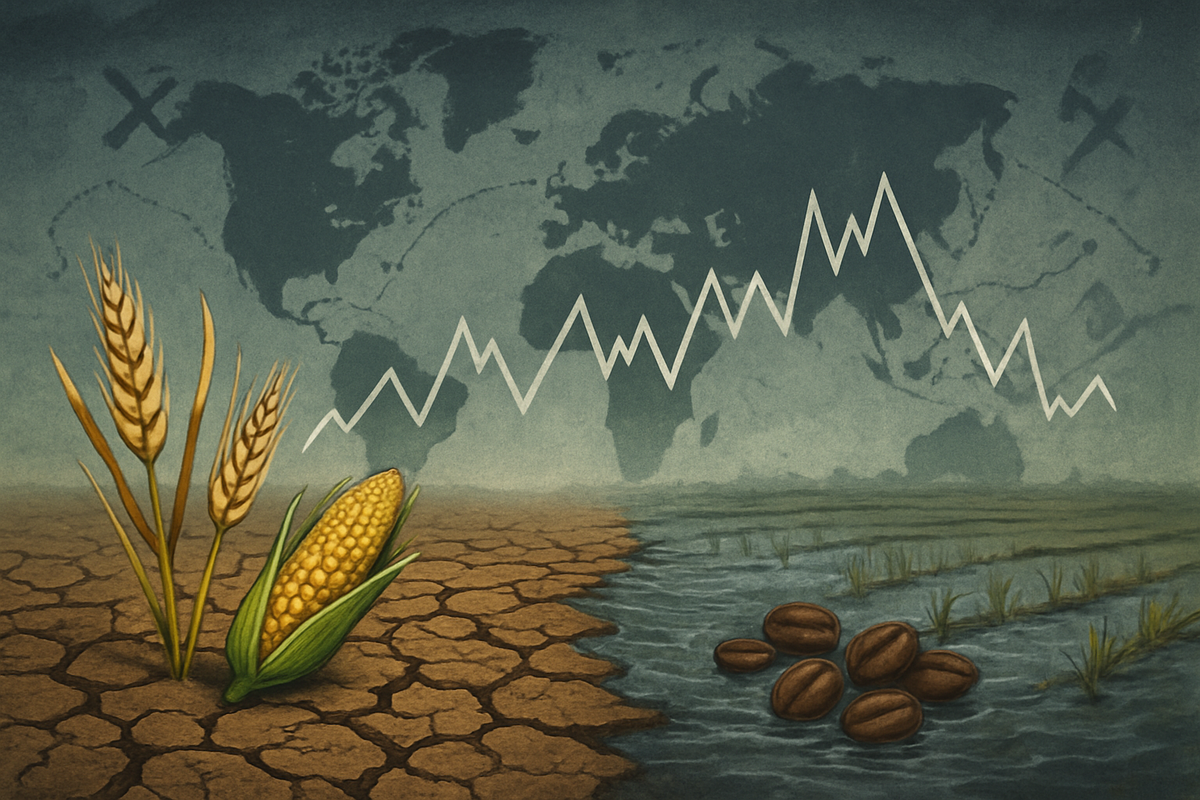GCA with African Development Bank to Strengthen Climate-Resilient Agricultural Value Chains in Eastern Angola – Global Center on Adaptation

Report on the GCA and AfDB Partnership for Climate-Resilient Agriculture in Angola
Introduction: Advancing Sustainable Development Goals through Strategic Partnership
The Global Center on Adaptation (GCA) and the African Development Bank (AfDB) have initiated a partnership to integrate climate adaptation measures into the Eastern Region Agricultural Value Chain Development Project in Angola. This collaboration, operating under the Africa Adaptation Acceleration Program (AAAP), directly supports the achievement of several Sustainable Development Goals (SDGs) by addressing climate vulnerability, food insecurity, and economic instability in the region.
Project Overview and Alignment with SDGs
The US$211.4 million investment by the AfDB is designed to transform the agricultural landscape in Angola’s eastern provinces. The project’s core objectives are intrinsically linked to the global development agenda.
- SDG 2 (Zero Hunger): The primary goal is to enhance food and nutrition security for over 440,000 beneficiaries by developing resilient value chains for key crops such as cassava, maize, and beans.
- SDG 1 (No Poverty): By increasing agricultural yields and improving market access, the project aims to raise household incomes for smallholder farmers, directly contributing to poverty reduction.
- SDG 8 (Decent Work and Economic Growth): The initiative seeks to expand employment opportunities, fostering sustainable economic growth and diversification away from non-renewable sectors.
- SDG 5 (Gender Equality) & SDG 10 (Reduced Inequalities): The project has a strong focus on inclusivity, targeting women and youth as primary beneficiaries to ensure equitable distribution of economic benefits and opportunities.
Addressing Climate Vulnerability (SDG 13: Climate Action)
Angola’s agricultural sector faces significant threats from climate change, which undermines progress towards the SDGs. This project places SDG 13 at the center of its strategy to build a resilient food system.
- Climate Risk Assessment: GCA is conducting detailed climate risk and vulnerability assessments. This data-driven approach will inform the selection of climate-smart agricultural practices and technologies, ensuring long-term sustainability.
- Adaptation Solutions: The project will scale proven adaptation solutions, including drought-tolerant seed varieties and water-efficient irrigation, to mitigate the impacts of climate shocks like recurring droughts.
- Digital Climate Advisory Services (DCAS): The development and expansion of DCAS will provide farmers with crucial information, including early warnings and climate-resilient farming techniques, strengthening their adaptive capacity.
Strategic Interventions for Sustainable Development
The technical assistance provided by GCA focuses on several key areas to ensure the project’s success and its contribution to the SDGs.
- Innovation and Infrastructure (SDG 9): The project supports the digitalization of climate-adaptive seed systems to improve availability and uptake. Furthermore, the establishment of four agribusiness service centers will strengthen infrastructure for advisory support, private investment, and market access.
- Sustainable Production (SDG 2): Capacity-building programs for provincial agriculture departments, extension agents, and farmers will embed climate-resilient practices through farmer field schools, promoting sustainable agricultural methods.
- Partnerships for the Goals (SDG 17): The project is a model of effective partnership, leveraging the financial strength of the AfDB, the technical expertise of the GCA, and collaboration with CGIAR partners like IITA/TAAT and IWMI to achieve shared development objectives.
Projected Impacts and Contribution to the 2030 Agenda
The project is expected to deliver significant, measurable outcomes by 2030, directly advancing multiple SDGs.
- Enable over 116,000 farmers to adopt climate-resilient inputs, contributing to SDG 2 and SDG 13.
- Ensure at least 50% of beneficiaries are women and nearly a third are youth, advancing SDG 5 and SDG 10.
- Contribute to 40,000 additional jobs for women and young people, supporting SDG 8.
- Expand climate-resilient cultivation across 200,000 hectares of farmland, reinforcing commitments to SDG 2 and SDG 13.
By aligning with Angola’s national development priorities, including Vision 2050, this initiative serves as a critical step toward building a resilient, prosperous, and sustainable agricultural future for the nation, fully in line with the principles of the Sustainable Development Goals.
Analysis of Sustainable Development Goals in the Article
1. Which SDGs are addressed or connected to the issues highlighted in the article?
The article highlights issues and initiatives that are directly connected to several Sustainable Development Goals (SDGs). The primary focus on climate-resilient agriculture, food security, economic opportunity, and gender equality links the project to the following SDGs:
- SDG 1: No Poverty – The project aims to raise household incomes for smallholder farmers, directly addressing poverty reduction.
- SDG 2: Zero Hunger – A core objective is to improve food and nutrition security by strengthening agricultural value chains and increasing the resilience of food production systems.
- SDG 5: Gender Equality – The project has specific targets for the inclusion of women as beneficiaries and in job creation, promoting their economic empowerment.
- SDG 8: Decent Work and Economic Growth – The initiative focuses on expanding employment opportunities, particularly for women and youth, and driving productivity-driven agriculture.
- SDG 13: Climate Action – The entire project is framed around climate adaptation, aiming to strengthen resilience to climate shocks like droughts and integrate climate risk assessments into agricultural planning.
- SDG 17: Partnerships for the Goals – The project is a collaborative effort between the Global Center on Adaptation (GCA), the African Development Bank (AfDB), and CGIAR partners, exemplifying a multi-stakeholder partnership for sustainable development.
2. What specific targets under those SDGs can be identified based on the article’s content?
Based on the project’s objectives and activities described in the article, several specific SDG targets can be identified:
- Target 1.5: By 2030, build the resilience of the poor and those in vulnerable situations and reduce their exposure and vulnerability to climate-related extreme events and other economic, social and environmental shocks and disasters.
- The article emphasizes strengthening resilience to climate shocks like droughts, which affect one million people annually in Angola, by introducing climate-resilient practices and technologies.
- Target 2.3: By 2030, double the agricultural productivity and incomes of small-scale food producers, in particular women, indigenous peoples, family farmers, pastoralists and fishers.
- The project aims to raise household incomes for over 440,000 beneficiaries, many of whom are smallholder farmers, by improving access to quality inputs, markets, and extension services.
- Target 2.4: By 2030, ensure sustainable food production systems and implement resilient agricultural practices that increase productivity and production, that help maintain ecosystems, that strengthen capacity for adaptation to climate change, extreme weather, drought, flooding and other disasters.
- The initiative focuses on scaling “climate-smart agriculture options,” “drought-tolerant seed varieties,” and “water-efficient irrigation technologies” across 200,000 hectares.
- Target 5.5: Ensure women’s full and effective participation and equal opportunities for leadership at all levels of decision-making in political, economic and public life.
- The project explicitly states that “at least half of beneficiaries being women,” ensuring their participation in economic activities and access to resources.
- Target 8.5: By 2030, achieve full and productive employment and decent work for all women and men, including for young people and persons with disabilities, and equal pay for work of equal value.
- A stated goal is to contribute to “40,000 additional jobs for women and young people” across the agricultural value chains.
- Target 13.1: Strengthen resilience and adaptive capacity to climate-related hazards and natural disasters in all countries.
- The project is centered on embedding climate adaptation through “climate risk and vulnerability assessments,” “Digital Climate Advisory Services (DCAS),” and “early-warning platforms.”
- Target 17.17: Encourage and promote effective public, public-private and civil society partnerships, building on the experience and resourcing strategies of partnerships.
- The project is a partnership co-led by the AfDB and GCA under the Africa Adaptation Acceleration Program (AAAP), with collaboration from CGIAR partners, demonstrating a multi-stakeholder approach.
3. Are there any indicators mentioned or implied in the article that can be used to measure progress towards the identified targets?
Yes, the article mentions several specific, quantifiable indicators that can be used to measure the project’s progress and success towards the identified targets:
- Number of beneficiaries: The project aims to reach “more than 440,000 direct and indirect beneficiaries.”
- Adoption of resilient practices: Progress can be measured by the goal to “enable more than 116,000 farmers to adopt improved climate-resilient inputs.”
- Gender and youth inclusion: Specific metrics include ensuring “at least half of beneficiaries being women and nearly a third youth.”
- Job creation: A key indicator is the creation of “40,000 additional jobs for women and young people.”
- Land area under resilient cultivation: The project aims to “expand climate-resilient cultivation across 200,000 hectares of farmland.”
- Infrastructure and services: The establishment of “four agribusiness service centers” serves as a structural indicator of improved advisory support and market access.
- Financial Investment: The “US$211.4 million million investment” by the AfDB is a key input indicator for the partnership.
- Development of climate information tools: The creation of “risk maps and projections under multiple climate scenarios” and the expansion of “Digital Climate Advisory Services (DCAS)” are indicators of strengthened adaptive capacity.
4. Table of SDGs, Targets, and Indicators
| SDGs | Targets | Indicators |
|---|---|---|
| SDG 1: No Poverty | 1.5: Build the resilience of the poor and reduce their vulnerability to climate-related extreme events. | Raising household incomes for over 440,000 beneficiaries; reducing vulnerability to climate shocks like drought. |
| SDG 2: Zero Hunger | 2.3: Double the agricultural productivity and incomes of small-scale food producers. 2.4: Ensure sustainable food production systems and implement resilient agricultural practices. |
Improving food and nutrition security; enabling 116,000 farmers to adopt climate-resilient inputs; expanding climate-resilient cultivation across 200,000 hectares. |
| SDG 5: Gender Equality | 5.5: Ensure women’s full and effective participation and equal opportunities in economic life. | At least half of the 116,000 farmer beneficiaries will be women; contributing to 40,000 additional jobs with a focus on women. |
| SDG 8: Decent Work and Economic Growth | 8.5: Achieve full and productive employment and decent work for all women and men, including for young people. | Creation of 40,000 additional jobs for women and young people across agricultural value chains. |
| SDG 13: Climate Action | 13.1: Strengthen resilience and adaptive capacity to climate-related hazards and natural disasters. | Implementation of climate risk assessments; scaling of adaptation solutions (drought-tolerant seeds, irrigation); development of Digital Climate Advisory Services (DCAS) and early-warning platforms. |
| SDG 17: Partnerships for the Goals | 17.17: Encourage and promote effective public, public-private and civil society partnerships. | The partnership between the Global Center on Adaptation (GCA), the African Development Bank (AfDB), and CGIAR to implement a US$211.4 million project. |
Source: gca.org
What is Your Reaction?
 Like
0
Like
0
 Dislike
0
Dislike
0
 Love
0
Love
0
 Funny
0
Funny
0
 Angry
0
Angry
0
 Sad
0
Sad
0
 Wow
0
Wow
0




















































.jpg.webp?itok=0ZsAnae9#)

























